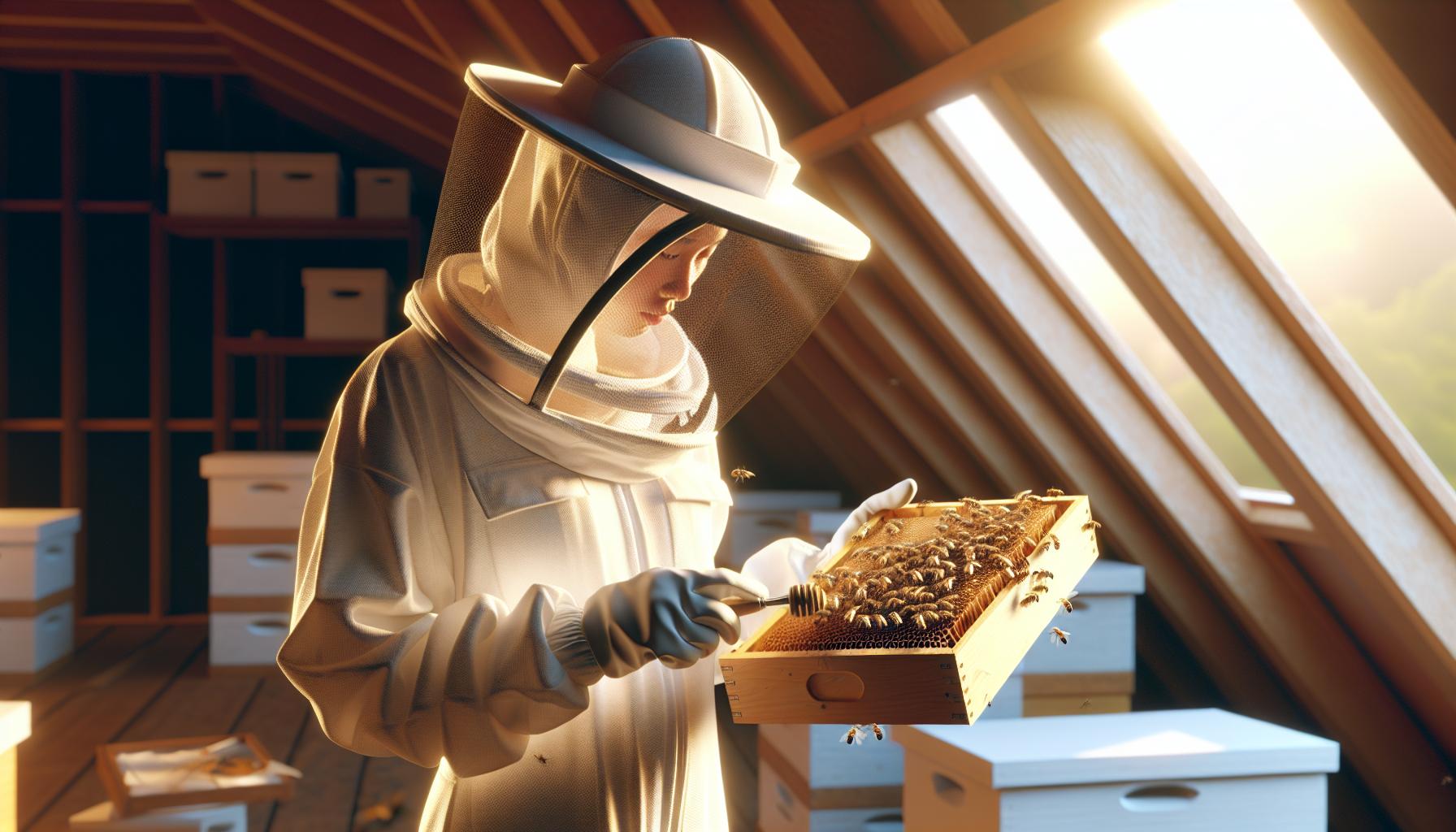Honey bees are vital pollinators that play a crucial role in maintaining biodiversity and supporting food production. However, when they establish a hive in unwanted locations, such as attics, walls, or sheds, it can lead to safety concerns for homeowners. A well-informed approach to hive removal ensures the safety of both people and bees while preventing structural damage to properties. This article explores why professional honey bee hive removal is necessary, the process involved, and the benefits of responsible relocation.
Why Professional Honey Bee Hive Removal Matters
Attempting to remove a bee hive without professional help can pose significant risks. From aggressive bee behavior to property damage, improper removal methods can lead to serious consequences. Understanding the importance of professional removal helps homeowners make informed decisions.
Dangers of DIY Hive Removal
While some may consider removing a hive themselves, it often results in more harm than good. Common risks include:
-
Increased likelihood of bee stings: Without proper protective gear and knowledge, homeowners risk multiple bee stings, which can be dangerous, especially for those with allergies.
-
Incomplete removal: If parts of the hive, such as honeycomb or larvae, are left behind, they can attract more bees or pests like ants and rodents.
-
Property damage: Bees often create hives in difficult-to-reach areas. Removing them improperly can lead to structural damage, requiring costly repairs.
-
Failure to prevent re-infestation: Without sealing entry points, bees may return to the same spot and rebuild their hive.
Benefits of Hiring Professionals
Professional bee removal services offer a safe and efficient way to handle infestations. Some key advantages include:
-
Expert knowledge: Trained professionals understand bee behavior and can assess the best approach for removal.
-
Safe extraction methods: Experts use humane techniques that protect both the bees and the homeowners.
-
Proper relocation: Instead of extermination, professional removers often transfer the hive to a safer environment where the bees can continue pollinating.
-
Post-removal care: Professionals ensure all remnants of the hive are removed, and entry points are sealed to prevent future issues.
Signs You May Have a Honey Bee Hive
Early detection of a bee hive can prevent serious issues. Homeowners should watch for the following signs:
-
Increased bee activity: If you notice a large number of bees entering and exiting a particular area of your home, there may be a hive nearby.
-
Buzzing sounds: A consistent buzzing noise from within walls, attics, or trees can indicate an active hive.
-
Visible honeycomb or wax buildup: Spotting honey dripping or wax deposits near an opening suggests a well-established colony.
-
Clusters of dead bees: If you find dead bees accumulating near windows, doors, or vents, it may indicate a nearby hive.
Common hive locations include:
-
Attics
-
Wall voids
-
Eaves and rooflines
-
Hollow tree trunks
-
Garden sheds
-
Crawl spaces
The Honey Bee Hive Removal Process
Professional bee hive removal follows a systematic process to ensure safety and effectiveness.
Step 1: Inspection and Assessment
A professional begins by inspecting the property to locate the hive and assess its size. Specialized equipment, such as thermal imaging cameras, may be used to detect hidden hives.
Step 2: Safe Removal Techniques
Depending on the hive’s location and size, different techniques may be employed:
-
Bee vacuuming: A specialized vacuum gently collects bees without harming them, allowing for relocation.
-
Hive box transfer: The hive is carefully cut out and transferred into a beekeeper’s hive box for relocation.
-
Swarm trapping: If bees are swarming, a baited hive box may be used to encourage them to move naturally.
Step 3: Post-Removal Cleanup
After removing the bees, professionals clean the area to remove honeycomb, larvae, and wax deposits. This step is crucial to prevent future infestations.
Step 4: Preventative Measures
Finally, entry points are sealed, and homeowners receive guidance on preventing future bee invasions. Recommendations may include:
-
Sealing cracks and openings
-
Installing mesh screens over vents
-
Keeping outdoor spaces clean and free of attractants like sugary food or drinks
Benefits of Responsible Bee Removal
Choosing professional honey bee removal services benefits both homeowners and the environment.
Protecting Property
Hives inside walls or roofs can cause long-term damage. Bees produce wax and honey, which can seep into structures and attract pests. Removing the hive professionally prevents such issues and reduces costly repairs.
Preserving Local Bee Populations
Given their declining numbers, protecting honey bees is essential. Professional removers relocate bees to apiaries or natural environments where they can thrive and continue pollinating plants.
Enhancing Safety
Bees may become aggressive if disturbed, posing a risk to people and pets. Professional removal minimizes these dangers by ensuring a smooth, controlled process.
Conclusion
Honey bee hive removal requires expertise to ensure both human safety and the preservation of these essential pollinators. Professional removal services provide a safe, effective, and environmentally responsible solution for homeowners facing bee infestations. By understanding the risks of DIY removal and opting for professional help, homeowners can protect their property while contributing to the conservation of honey bees.
If you suspect a honey bee hive on your property, seeking professional assistance is the best course of action. Not only does it prevent potential hazards, but it also ensures that these vital insects are relocated to a place where they can continue benefiting our ecosystem.
Frequently Asked Questions (FAQs)
1. What are the risks of having a honey bee hive near my home?
Having a hive close to your home can lead to increased bee activity, which may pose a risk of stings, especially for children or pets. Additionally, hives inside walls or attics can cause structural damage over time.
2. Can I remove a honey bee hive myself?
DIY removal is not recommended due to the risks involved, including bee stings, incomplete hive removal, and potential damage to your property. Professional services ensure safe and effective hive extraction.
3. How long does it take to remove a honey bee hive?
The removal process can take anywhere from a few hours to an entire day, depending on the size and location of the hive. Complex removals, such as those inside walls, may require additional time for repairs and sealing entry points.
4. What happens to the bees after removal?
Professional bee removers typically relocate the bees to a safe habitat, such as an apiary, where they can continue their role as pollinators. In rare cases, if the hive is diseased, extermination may be necessary, but relocation is the preferred option.
5. How can I prevent bees from returning to the same location?
After removal, it’s crucial to seal all potential entry points and remove any leftover honey or wax. Installing deterrents, such as bee repellents or physical barriers, can also help prevent re-infestation.



